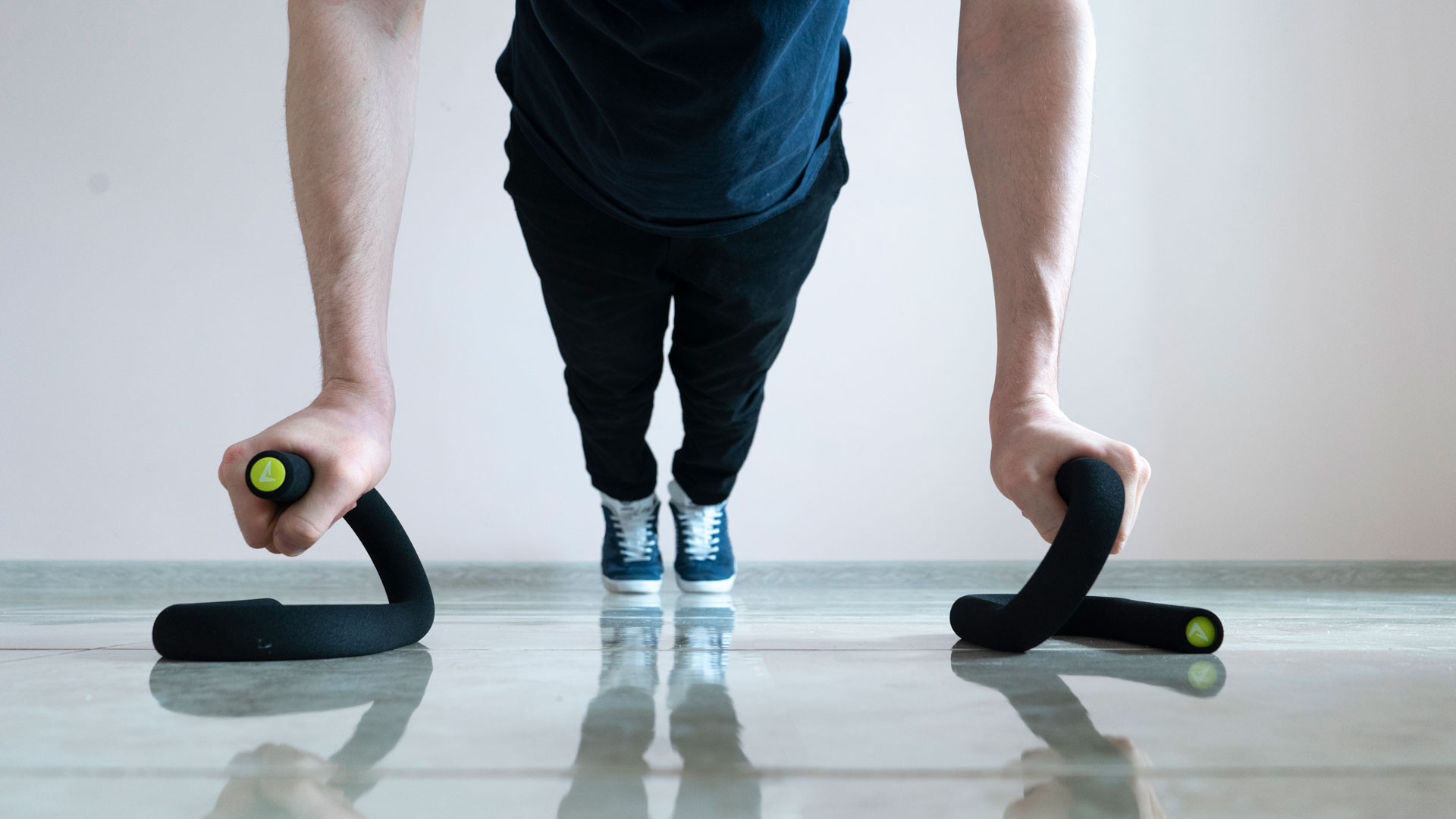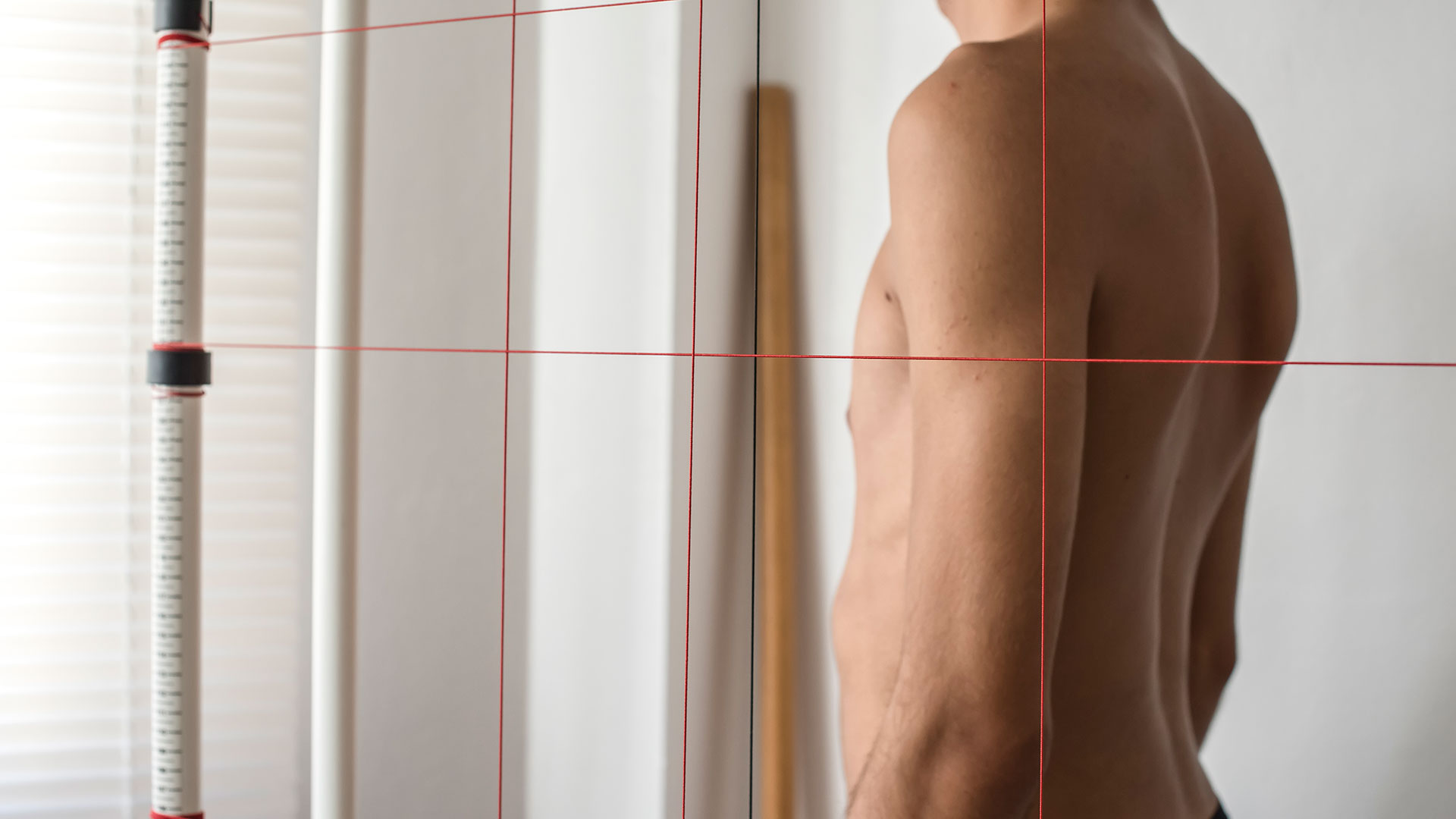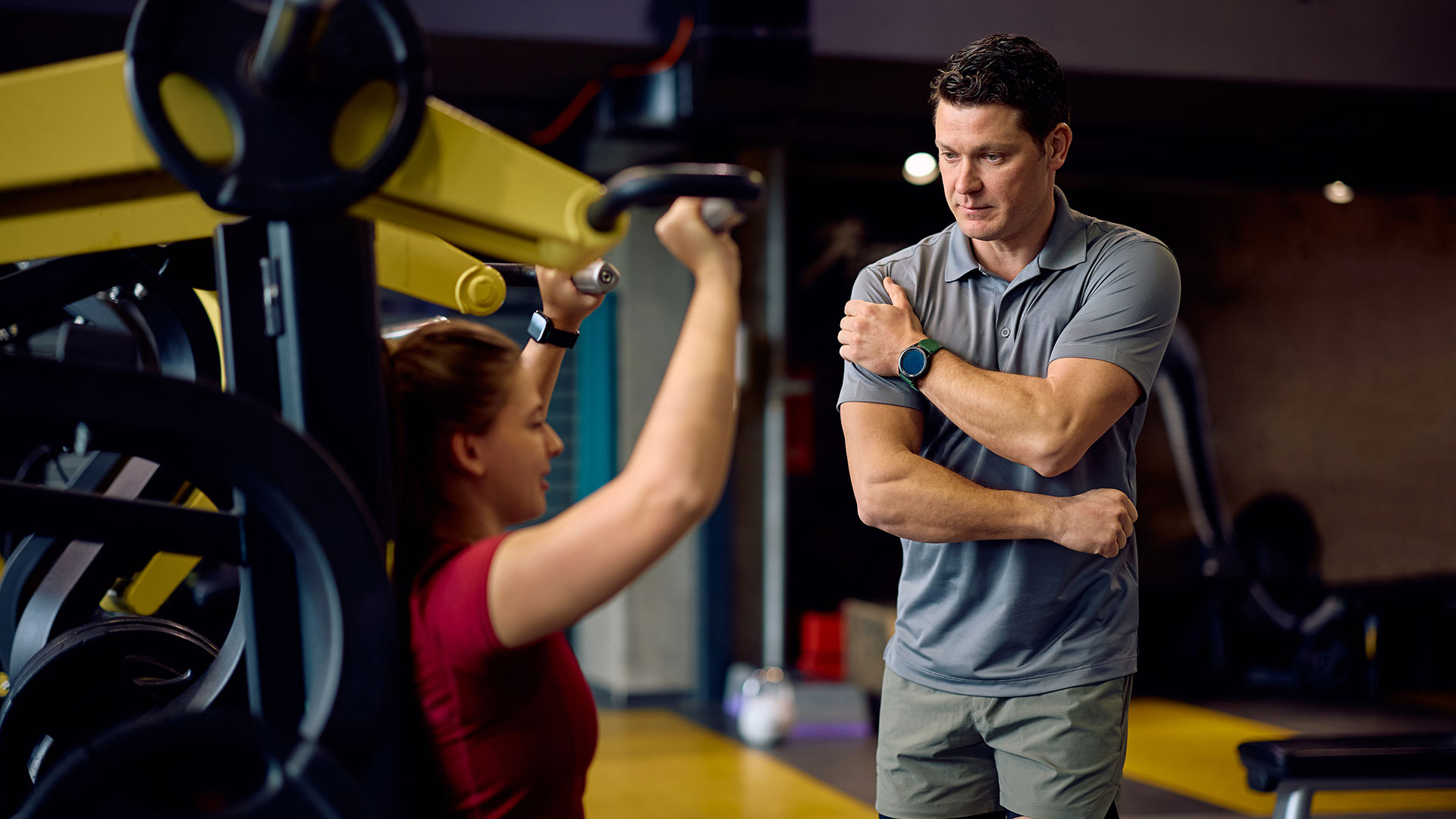When most people start their fitness journey, their main focus is usually on lifting heavier weights, losing fat, or building muscle. But one of the most overlooked foundations of training success is posture correction. Good posture is not just about standing up straight it’s about keeping your body aligned so that your muscles, joints, and spine work together safely and efficiently.
Research in exercise science consistently shows that proper alignment in exercise reduces the risk of injury, improves muscle activation, and helps you progress faster. For beginners, learning the right movement patterns early can make the difference between long-term results and chronic setbacks.
This article will help you understand why posture matters, what common posture problems beginners face, and how small corrections in your body mechanics can significantly improve both your workouts and your everyday life.
Understanding Posture: More Than Just “Standing Tall”
When people hear the word “posture,” they often imagine standing with shoulders back and chest out. While that’s part of it, posture goes deeper than appearance it’s about how your body holds itself in motion and at rest. In fitness terms, posture refers to maintaining a neutral spine, balanced joints, and proper muscle engagement throughout different movements.
For beginners, common posture problems include:
-
Rounded shoulders from long hours at a desk or using smartphones.
-
Anterior pelvic tilt (an exaggerated arch in the lower back), often caused by weak core muscles and tight hip flexors.
-
Forward head posture, where the neck leans forward instead of staying stacked over the spine.
These misalignments don’t just affect how you look they impact how you move. Poor posture changes your body mechanics, which can lead to uneven muscle development, joint stress, and even injuries during exercise.
Modern lifestyle habits play a huge role in posture issues. Studies show that extended sitting, especially with poor ergonomics, weakens stabilizing muscles and reinforces faulty movement patterns. The good news? With awareness and consistent training, posture correction is not only possible but can become a natural part of your workouts and daily life.
The Science of Alignment and Body Mechanics
Behind every squat, push-up, or plank lies a hidden principle: your body only moves efficiently when it follows the laws of body mechanics. Body mechanics refers to the way bones, muscles, and joints interact to produce movement. When these systems are aligned correctly, your body distributes force evenly, reducing unnecessary stress on your joints and allowing your muscles to fire in the right sequence.
Why Proper Alignment in Exercise Matters
Research published in the Journal of Strength and Conditioning Research highlights that even small deviations in alignment such as knees caving inward during squats or the spine rounding in deadlifts can increase injury risk over time. Proper alignment ensures that:
-
Muscles activate correctly (for example, glutes engage more effectively in a squat when the hips and knees track properly).
-
Joints stay protected by minimizing unnatural stress.
-
Energy is used efficiently, meaning you get more results from the same amount of effort.
Real-World Examples
-
Squats: When performed with correct alignment (neutral spine, knees tracking over toes), squats strengthen the legs and core safely. When alignment breaks, pressure shifts to the lower back and knees.
-
Planks: A properly aligned plank engages the entire core and protects the lower back. With sagging hips or a rounded upper back, the exercise becomes less effective and potentially harmful.
-
Overhead presses: With correct posture, the shoulders move smoothly in their socket. Poor posture (rounded shoulders) increases the risk of impingement and shoulder pain.
In short, posture correction and alignment aren’t just “good habits” they’re backed by science as the most reliable way for beginners to train safely, prevent injury, and build a solid fitness foundation.
Posture Correction in Fitness Training
For beginners, posture correction isn’t about achieving a “perfect” stance overnight it’s about making gradual adjustments so your body learns to move safely and efficiently. In fitness training, posture is the foundation of every exercise, whether you’re lifting weights, stretching, or doing bodyweight movements.
Simple Posture Correction Exercises for Beginners
You don’t need advanced equipment to start improving your alignment. A few research-backed exercises can make a big difference:
-
Wall Angels: Stand with your back against a wall, arms bent at 90 degrees, and slowly raise and lower them like making a snow angel. This strengthens the upper back and opens tight chest muscles.
-
Glute Bridges: Lying on your back, knees bent, lift your hips while keeping your spine neutral. This corrects anterior pelvic tilt by strengthening glutes and core stabilizers.
-
Chin Tucks: Sit or stand tall, gently pull your chin straight back (as if making a double chin) without tilting your head. This counteracts forward head posture common in beginners.
These small, controlled exercises retrain your body mechanics and create muscle balance that carries over into bigger movements like squats and deadlifts.
Using Feedback to Improve Alignment
Even with the right exercises, posture correction takes awareness. Beginners often don’t notice when they’re out of alignment, so using feedback tools can help:
-
Mirrors: Watching your form during squats, planks, or push-ups allows you to see if your spine is neutral and your joints are aligned.
-
Trainers or workout partners: A second set of eyes can quickly spot posture problems beginners miss themselves.
Why Gradual Correction Works Best
Many beginners try to “fix” posture with extreme adjustments arching their backs, pulling shoulders too far, or forcing themselves into rigid positions. But research in physical therapy shows that sustainable posture correction comes from small, consistent changes. Correcting posture isn’t about holding a pose perfectly it’s about teaching your body to naturally find alignment during movement.
Over time, these adjustments reduce strain, improve strength development, and make exercises feel smoother and more controlled. By focusing on posture correction early in your fitness journey, you’re essentially programming your body for safe, efficient movement that supports long-term results.
How Posture Impacts Performance and Injury Prevention
When beginners think about fitness, they often focus on effort how heavy the weights are, how long the run is, or how many reps they can do. But science shows that posture correction and proper alignment in exercise are just as important as effort. The way your body moves determines whether your workouts build strength safely or set you up for pain and setbacks.
Posture and Performance
-
Efficient Muscle Activation: When you maintain correct alignment, muscles fire in the right sequence. For example, in a squat, the glutes and quadriceps share the load instead of letting the lower back take over.
-
Stronger Output: Research from the Journal of Applied Physiology indicates that athletes with good posture produce more force during resistance training, because energy isn’t “leaking” through inefficient movement patterns.
-
Better Endurance: Proper posture in running or cycling reduces wasted effort, allowing you to go longer without fatiguing. Think of it as driving a car with properly aligned wheels it takes less gas to move forward.
Posture and Injury Prevention
Poor alignment doesn’t always cause immediate pain, but over time, it adds stress to your joints and ligaments. For beginners, the most common issues include:
-
Knee pain from valgus collapse: Knees caving in during squats or lunges puts stress on ligaments like the ACL.
-
Lower back strain: A rounded spine during deadlifts or bent-over rows shifts the load onto spinal discs.
-
Shoulder impingement: Rounded shoulders during push-ups or overhead presses pinch the shoulder joint and increase the risk of tendon injury.
Multiple studies in sports medicine confirm that posture-related injuries are among the most common causes of gym setbacks. Correcting alignment early not only reduces these risks but also makes each workout safer and more sustainable.
The Real-World Difference
Imagine two beginners learning to deadlift.
-
The first lifts with poor alignment, rounded back, shoulders slouched forward. They may lift the same weight, but over time their lower back aches and their progress stalls.
-
The second focuses on posture correction, neutral spine, engaged core, hips and shoulders moving together. Not only do they lift more comfortably, but they also build strength in the right muscles, setting a foundation for long-term progress.
Posture, then, isn’t just about how you look in the gym. It’s the hidden factor that keeps you safe, improves your results, and makes fitness a journey you can stick with for years.
Common Posture Problems Beginners Encounter
When you’re just starting out at the gym, it’s easy to focus on lifting more or keeping up with a class. But many posture problems beginners face come from lifestyle habits outside the gym like sitting at a desk all day, hunching over a phone, or standing with poor alignment. These patterns often carry over into workouts, making exercises less effective and sometimes unsafe.
Here are some of the most common posture issues and how they affect your body mechanics:
1. Rounded Shoulders (Upper-Crossed Syndrome)
-
What it looks like: Shoulders roll forward, chest collapses, upper back curves.
-
Why it happens: Hours of sitting, tight chest muscles, and weak upper-back muscles.
-
In the gym: Push-ups, rows, and presses feel harder, and the risk of shoulder impingement increases.
-
Correction tip: Strengthen the mid-back with face pulls or rows; stretch chest muscles; practice wall angels.
2. Anterior Pelvic Tilt (Excessive Lower Back Arch)
-
What it looks like: Hips tip forward, stomach sticks out, exaggerated curve in the lower back.
-
Why it happens: Weak glutes and core, tight hip flexors from too much sitting.
-
In the gym: Squats and deadlifts put stress on the lower back instead of targeting the glutes and legs.
-
Correction tip: Strengthen glutes with hip thrusts and bridges; stretch hip flexors; engage core during lifts.
3. Forward Head Posture
-
What it looks like: Neck juts forward instead of staying aligned over the spine.
-
Why it happens: Extended screen use, phone scrolling, and poor sitting posture.
-
In the gym: Seen during planks, push-ups, or overhead presses, creates tension in the neck and reduces core activation.
-
Correction tip: Perform chin tucks, strengthen deep neck flexors, and stay mindful of head alignment during exercises.
4. Knees Caving In (Valgus Collapse)
-
What it looks like: Knees collapse inward during squats, lunges, or jumps.
-
Why it happens: Weak glutes, poor motor control, or lack of awareness.
-
In the gym: Increases stress on the knees and raises the risk of ligament injuries.
-
Correction tip: Strengthen glutes with banded squats or lateral walks; slow down movements to focus on proper knee tracking.
5. Rounded Lower Back in Lifts
-
What it looks like: Lower spine curves under during deadlifts or squats (also called “butt wink”).
-
Why it happens: Limited hip mobility, weak core, or lifting weights that are too heavy.
-
In the gym: Places pressure on spinal discs, leading to lower back pain.
-
Correction tip: Work on hip mobility, reduce load until form is solid, and keep the core braced throughout lifts.
These posture problems beginners face are not signs of failure, they’re simply signals your body needs retraining. With awareness, small corrections, and consistent practice, you can restore alignment and build a strong foundation for safe, effective training.
Long-Term Benefits of Posture Awareness
For beginners, posture correction may seem like a small detail compared to lifting heavier or running longer. But in the long run, awareness of alignment is one of the most powerful tools for sustaining progress in fitness.
-
Better Muscle Balance and Joint Health: Proper alignment ensures that muscles share the workload evenly. Over time, this prevents overuse injuries and imbalances, like tight chest muscles paired with weak upper back muscles.
-
Reduced Chronic Pain: Research in physiotherapy shows that correcting posture decreases the risk of long-term issues such as lower back pain, tension headaches, and shoulder stiffness problems that often derail gym-goers.
-
Improved Confidence and Everyday Movement: Standing tall with neutral posture not only makes you look more confident, but it also carries into daily life, walking, sitting, working at a desk, even sleeping positions benefit from awareness.
-
Longevity in Training: Athletes with good body mechanics tend to train consistently without breaks caused by injuries. For beginners, this means steady progress year after year instead of frustrating rest periods.
Posture awareness is a long-term investment: the earlier you start, the stronger and healthier your body will feel not just in the gym, but everywhere.
Applying Posture Correction in Your Fitness Journey
Knowing about posture is one thing; applying it to your workouts is where the real change happens. The good news is that you don’t need a perfect routine just a few simple habits can make a big difference.
-
Start with a Posture-Focused Warm-Up
Before lifting or cardio, spend 5–10 minutes on mobility and activation: wall slides, hip openers, and core bracing drills. This primes your body for proper alignment. -
Check Alignment During Every Exercise
Whether you’re squatting, pressing, or running, ask yourself: Is my spine neutral? Are my shoulders rolled back and down? Are my knees tracking properly? Small posture checks during sets keep you safe. -
Use Mirrors or Trainers
Beginners often can’t “feel” when they’re out of alignment. External feedback from mirrors or coaches can help you notice and correct posture problems early. -
Progress Over Perfection
Don’t try to force perfect form on day one. Instead, focus on gradual improvements. Consistency in posture correction will retrain your nervous system, making proper alignment feel natural over time.
By weaving posture awareness into your daily training, you’re building a fitness journey that’s safe, effective, and sustainable.
Conclusion
Your fitness journey is about more than burning calories or lifting heavy weights it’s about building a body that moves well for life. And at the core of that is posture correction.
By paying attention to proper alignment in exercise, you protect your joints, activate muscles more effectively, and make every workout count. For beginners especially, correcting posture early helps prevent injuries, boosts performance, and lays down movement patterns that will serve you for years to come.
Think of posture as the “invisible coach” guiding every rep, every step, and every stretch. When you train with awareness of alignment and body mechanics, you’re not only shaping your physique you’re building a foundation of health, confidence, and resilience that extends far beyond the gym.
So the next time you step into a workout, remember: it’s not just about how much weight you lift, but how well your body moves. Posture is the starting point of true fitness.
1. Why is posture correction important for beginners in the gym?
Posture correction helps beginners learn safe movement patterns, prevents injuries, and improves exercise efficiency. With proper alignment in exercise, muscles activate correctly, joints are protected, and results come faster.
2. What are the most common posture problems beginners face?
The most frequent posture problems beginners encounter include rounded shoulders, forward head posture, anterior pelvic tilt, knees caving in during squats, and rounding the lower back in deadlifts. Each of these can be corrected with targeted exercises and awareness of body mechanics.
3. How does proper alignment in exercise improve performance?
When your body is aligned correctly, energy is distributed more efficiently, allowing muscles to produce more force. Research shows that athletes with good posture perform better in strength and endurance activities because their body mechanics reduce wasted effort.
4. Can posture correction exercises really prevent injuries?
Yes. Studies in sports medicine confirm that poor alignment is one of the leading causes of joint stress and gym-related injuries. Simple posture correction drills, like wall angels or glute bridges, retrain movement patterns and significantly lower the risk of knee, back, and shoulder problems.
5. How can I apply posture correction to my daily fitness routine?
Start with a posture-focused warm-up, check alignment during every set, and use mirrors or trainers for feedback. Over time, posture awareness will become natural, helping you train safely and consistently while improving results inside and outside the gym.



